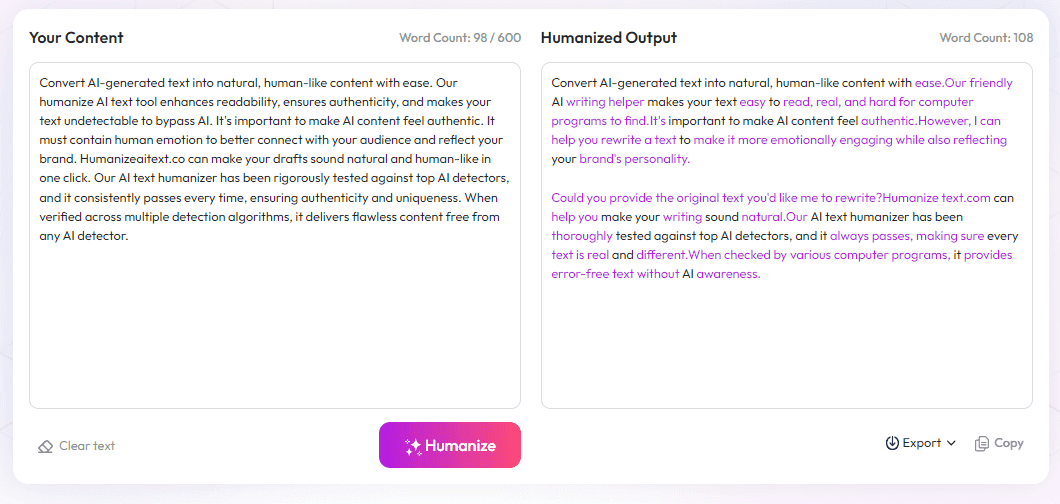Table of Contents
Thinking about personal branding, choosing the right colors can feel overwhelming. I get it—picking a palette that truly represents you isn't always easy. But don't worry, I'm here to help you find ideas that make your brand pop and feel authentic.
Keep reading, and you'll discover simple color palette ideas that fit your style and make your brand memorable. With a few clever choices, you'll be on your way to a cohesive look that catches eyes and leaves a lasting impression.
In the next few lines, I'll share fresh ideas to inspire your personal brand's perfect color combo. Let’s make branding fun and easy!
Key Takeaways
Key Takeaways
- Select colors that reflect your brand's personality and values to make a strong impression. Trust, creativity, warmth, or professionalism should guide your choices.
- Colors greatly influence first impressions and quick judgments. Using the right palette helps your brand stand out and be memorable in a crowded space.
- Harmonious combinations like blues for trust or yellows for positivity create a welcoming and reliable vibe. Use online tools to experiment with shades and hex codes.
- Understand color psychology: blues for dependability, reds for urgency, greens for growth. Match your colors with your message and target audience.
- Incorporate current color trends such as earthy tones or futuristic shades carefully, blending them with your core palette for a fresh look that remains timeless.
- Your color choices influence up to 80% of brand recognition and buying decisions. Design your website, logo, and social media with a consistent palette that aligns with your goals.
- Create a flexible color scheme that can adapt over time, keeping your brand relevant without complete overhauls. Follow industry forecasts for new color ideas.
- Stand out with unique color combos that are eye-catching and memorable. Experiment with contrasts and custom shades for a signature look.
- Before finalizing your palette, gather feedback through surveys or A/B tests. Adjust colors based on real user responses to keep your brand aligned with audience preferences.

Personal Brand Color Palette Ideas
Your personal brand color palette isn’t just about choosing pretty shades—it’s about picking colors that communicate who you are and what you stand for. Think of it as your brand’s personality in hue form. When people see your colors, they should instantly get a vibe of trust, creativity, warmth, or professionalism, depending on your goals.
Did you know that 16% of consumers notice the color scheme of a brand before anything else? That’s why selecting the right palette can set you apart in a crowded digital space. And with 62% of consumers making quick judgments based on color alone, nailing your palette is almost like a quick handshake—first impressions matter.
To maximize impact, many brands lean toward harmonious color combinations. For example, blues (like #1E90FF or #0077CC) are top choices to establish trust and reliability. On the other side, vibrant yellows (#FFD700 or #FFC107) evoke optimism and positivity. Combining these tones thoughtfully can create a welcoming yet professional vibe that resonates with your audience.
If you want your brand to look modern and innovative, consider a palette inspired by the latest trends—futuristic tones mixed with earthy, organic shades. In 2025, around 65% of paint color purchases are earthy tones such as beige (#F5F5DC), olive green (#708238), and terracotta (#E2725B). Incorporating these can give your brand a grounded, natural feel that appeals to conscious consumers.
One great way to find the perfect color combinations is using online palette generators that offer hex codes and visual previews. Tools like Coolors or Colors.co help you experiment with hues that fit your brand traits—whether that’s sophistication, friendliness, or innovation.
To convey specific brand traits, it's helpful to understand some basics of color psychology. For example, yellow (#FFEB3B) is linked with optimism and positivity, perfect for brands that want to appear energetic and approachable. Conversely, shades of blue (.like #336699) encourage a sense of trust and dependability, making them popular choices for financial services or healthcare brands.
Sometimes, picking a color palette isn’t just about the “what” but also the “how.” Think about adaptive or "living" color schemes—inspired by the 30% of consumers interested in palettes that shift based on mood or context. As this trend picks up, your brand might consider flexible color themes that change subtly to reflect tone or seasons.
If you’re serious about making your brand stand out, coloring choices influence up to 80% of brand recognition and 60-80% of buying decisions. Whether you're designing a website, logo, or social media profile, your color palette acts as a visual shortcut to your core message. It’s worth exploring resources that help you craft brand colors that not only look great but are backed by insights—it might just be the edge you need.

How to Choose the Right Color Combinations for Your Brand
Picking the perfect color pairings isn't just about matching shades; it’s about balancing contrast, harmony, and the emotional response you want to evoke. Start by defining the core trait you want your brand to communicate, then select one dominant color that embodies that vibe. Use online tools like Coolors to generate palettes that combine your main hue with complementary shades, ensuring they look good together and work across various platforms. Keep in mind that some colors, like blue, are great for building trust, while others, like yellow, boost feelings of optimism. Test your chosen palette by applying it to different elements—website headers, social media posts, or packaging—to see if it maintains its impact in real-world use. And don’t forget to consider accessibility; make sure your color choices are distinguishable for users with visual impairments.
Using Color Psychology to Convey Your Brand Message
Every color whispers something about your brand—whether it’s reliability, energy, or sophistication. For example, blue is often seen as trustworthy and calm, making it ideal for healthcare or finance companies. Red, on the other hand, signals passion and urgency, perfect for sales or food brands eager to stimulate appetite or action. Yellow can bring positivity and friendliness but should be used thoughtfully—too much can be overwhelming. Green is typically associated with health, nature, and growth, making it a good choice for eco-friendly brands. When choosing your palette, think about the message you want your colors to send and back that up with data, like the fact that 62% of consumers link yellow with optimism. Remember, cultural perceptions matter too—what works in one country might not in another, so research your target audience’s color associations.
How to Incorporate Trends into Your Color Palette
Trends can make your brand feel fresh and relevant, but it’s important not to follow blindly. As of 2025, a big trend involves earthy tones like beige, olive green, and terracotta, which appeal to eco-conscious consumers and give a grounded vibe. Meanwhile, AI-inspired futuristic colors—metallics, neons, and holographic effects—are gaining interest, especially among tech brands aiming for a vanguard look. To include trends without losing your unique identity, pick a base palette that aligns with your core message and sprinkle in trendy shades as accents. For example, you might use earthy tones for most of your branding but add a pop of neon yellow to draw attention to calls-to-action. Use tools like Colors.co to see trending palettes and get inspiration. Just remember, trends fade; always consider your long-term brand positioning.
How color influences consumer behavior and purchasing decisions
Colors influence up to 80% of brand recognition and significantly impact buying habits. For instance, blue ranks as the top color for building customer trust and is commonly used by financial institutions. It also triggers impulse buys—think about how many fast-food logos incorporate reds and yellows to stimulate appetite and quick decisions. Bright colors like yellow, pink, and red are searched for 45% more in spring/summer collections, showing how color can affect seasonal preferences. When designing your website or product packaging, choose colors that align with your sales goals. For example, using warm tones can create a sense of urgency, encouraging immediate purchases, while cool hues can foster a feeling of calmness for high-end or luxury products. Incorporate these insights into your branding strategy to better guide consumer choices.
How to Use Color Trends to Future-Proof Your Brand
Staying ahead means keeping an eye on what’s emerging in color trends. In 2025, consumers are predicting a blend of earthy, organic palettes with futuristic, tech-inspired tones. Think neutral beiges combined with metallic accents or electric blues. To make your brand future-proof, try creating a flexible palette that can evolve over time. For example, develop a primary set of colors that stay consistent but plan secondary accents that can shift with new trends or seasons. Follow industry reports like the latest color forecasts and observe what innovators in your space are adopting. This way, your branding remains modern and relevant, without the need for frequent complete overhauls.
How to Make Your Brand Stand Out with Unique Color Combinations
Standing out in a sea of brands often comes down to your color choices. Aim for combinations that are memorable and break the usual patterns—think unexpected pairings like deep purple with neon green, or terra cotta with icy blue. Use contrast thoughtfully to ensure readability and visual impact. Experiment with muted tones paired with bright pops to add depth and intrigue. Don't shy away from customizing shades slightly away from standard hex codes to create a signature look. Try out different options on your website mockups or social media before settling. A unique color combination can turn into a visual signature that makes your brand instantly recognizable, helping you stay top of mind.
How to Test and Refine Your Brand Colors
Before finalizing your palette, gather feedback from real users and stakeholders. Conduct quick surveys asking people how they perceive your current colors. Use A/B tests on your website to see which color schemes generate better engagement. Tools like AutoCrit or simple heatmaps can reveal how visitors interact with different colors, giving you insight into their preferences. Also, review your palette across various platforms—what looks good on screen might not translate as well printed. Be willing to make small tweaks based on data and feedback, as this ongoing adjustment ensures your brand stays aligned with your audience’s evolving tastes. Remember, perfecting your color scheme is a process, not a one-and-done task.
FAQs
Pick colors that reflect your personality and the emotions you want your brand to evoke. Consider your target audience and industry standards. Use color psychology to select hues that align with your brand message and values.
Yes, using a primary and secondary color palette helps create visual interest. Keep the number of colors limited to maintain consistency. Ensure the colors complement each other and support your brand's overall tone.
Test your colors on various backgrounds and media to ensure they look good everywhere. Use color codes like HEX and RGB for consistency. A flexible palette allows your brand to stay recognizable across digital and print materials.
While trendy colors can add freshness, prioritize colors that resonate with your personality and industry. Trends fade, but a well-chosen palette can establish a timeless and authentic brand identity.



